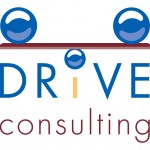 April 25, 2012 – It was the best of solutions. It was the worst of solutions. If only I were more creative, I would have crafted the perfect solution. Pardon my paraphrasing Dickens, but this sentiment, although perhaps not universally experienced, bears consideration as a lead in to the question underlying this blog:
April 25, 2012 – It was the best of solutions. It was the worst of solutions. If only I were more creative, I would have crafted the perfect solution. Pardon my paraphrasing Dickens, but this sentiment, although perhaps not universally experienced, bears consideration as a lead in to the question underlying this blog:
What is creativity and how many of us recognize our own creativity?
The word “creative,” often conjures up the image of an angst driven artist. Based on this image, many people are wary of thinking of themselves as creative types. And yet what often follows from living a non-creative life is a feeling of rote – one step after another – monotony – without the freedom, or the ability, to freely express and live our own individuality.
How limiting therefore is this belief that creativity is only for the artistically inclined? Those of you who follow these blog postings know how important a broad perspective is. Not surprisingly then, the first key to creativity is to develop a broader perspective. So let’s broaden the perspective of the nature of creativity and how to access this ability just a tad.
Steve Jobs was quoted as saying that “creativity is just connecting things.” To be creative we merely need the ability to connect the dots. Which dots to connect and in what manner will determine the value of each particular moment of creativity. How then do we determine which dots to connect and in what manner?
Consider whether the super specialization rampant in today’s world is conducive to or an anathema to creative thought. Although there are some benefits to super specialization (carving out a specialized niche is helpful for the practitioner to be recognized as an expert), the more one specializes the narrower one’s perspective becomes and the fewer options are readily apparent. Even our system of higher education supports the concept of more generalized knowledge base. Unlike universities throughout much of the world, American colleges are, for the most part, liberal arts institutions where students are required to learn varied disciplines in addition to their declared majors. The underlying rationale for this system is to encourage the production of broadly educated people.
Modern research has also shown us that creativity requires cross pollenation from diverse fields. See How To Be Creative, by Jonah Lehrer, http://on.wsj.com/zvUCgJ. The more knowledge we acquire the broader our pool of information. The broader and deeper our pool of information, the more resources we have at our fingertips. The more resources at our disposal the greater the range of our choices. And the greater the range of choices, the more fertile the ground for creativity. Take the recent announcement that “nearly half the new MCAT’s will focus on squishier topics in two new sections: one covering social and behavioral sciences and another on critical analysis and reading. ”Pre-Med’s New Priorities: Heart and Soul and Social Science http://www.nytimes.com/2012/04/15/education/edlife/pre-meds-new-priorities-heart-and-soul-and-social-science.html. The medical establishment has begun to realize that included in the recipe for a good doctor is more than merely knowing hard science. The human element, the “bedside manner,” knowing what message to deliver and how to deliver it, are integral parts of the mixture. By requiring medical students, and by extension doctors, to broaden their knowledge base, they will have greater tools to create more options – more dots to connect – in crafting ways to treat their patients.
The first key to creativity is therefore to develop a broad perspective. The broader your perspective the more dots you will be able to identify. For each task you face, exercise creativity by practicing broadening your perspective and identify as many dots – options – as you can. The secret to identifying the options is to avoid censoring or otherwise weighing among the various options you come up with. To do this, clearly delineate the goal the projected options, dots, are intended to accomplish. At this stage the only requirement is that each option identified will in fact accomplish the goal. Later on in the process there will be time to consider choosing the best option.
And what about the second key? For the answer to that question, read Part 2 of this topic.
Consider/Create the Possibilities.
Adam J. Krim www.driveconsulting.net







